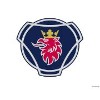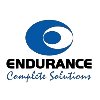Filter interviews by
SODECIA Production Engineer Interview Questions and Answers
SODECIA Production Engineer Interview Experiences
1 interview found

(2 Questions)
- Q1. About stamping ,about welding
- Q2. About past work experience and technical knowledge
Interview Preparation Tips
Top trending discussions






Interview questions from similar companies

(6 Questions)
- Q1. What is furnace Brazing, what is your current role in current company.
- Ans.
Furnace brazing is a joining process in which two or more metal items are joined together using a filler metal that has a lower melting point than the base metals.
Furnace brazing involves heating the metal parts in a furnace to a temperature above the melting point of the filler metal but below the melting point of the base metals.
The filler metal is then drawn into the joint by capillary action, creating a strong bond...
- Q2. What is daily routine your current company?
- Q3. What is 4M Change?
- Ans.
4M Change is a method used in production engineering to identify and address the four main factors that can lead to process variations: Man, Machine, Material, and Method.
4M Change involves analyzing the impact of changes in manpower (Man), equipment (Machine), raw materials (Material), and processes (Method) on production outcomes.
By considering these four factors, production engineers can make informed decisions to o...
- Q4. What do you do if operator not coming at particular station, what is action plan for that ?
- Q5. What is Red bin activity,5S,7Waste, Problem solving technique and some questions releted to your CV.
- Ans.
Red bin activity, 5S, 7 Waste, and problem-solving techniques are important concepts in lean manufacturing for improving efficiency and reducing waste.
Red bin activity involves using red bins to highlight areas of waste or inefficiency in the production process.
5S is a methodology for organizing the workplace to improve efficiency and effectiveness (Sort, Set in order, Shine, Standardize, Sustain).
7 Waste refers to the...
- Q6. What is the current company furnace Brazing process ? What is production output per/hour. Furnace Brazing conveyor belt speed etc.
- Ans.
The current company furnace brazing process involves using a conveyor belt with a specific speed to achieve a certain production output per hour.
The current company uses a continuous belt furnace for brazing process.
The conveyor belt speed is set at 5 feet per minute.
The production output per hour is 200 units.
The furnace brazing process involves heating the parts to a specific temperature and then cooling them in a co
(3 Questions)
- Q1. Where do you live ?
- Q2. How many family members? Where are your from etc
- Q3. What is current salary?
Interview Preparation Tips

An aptitude test is designed to assess an individual's ability to perform certain tasks or react to a range of different situations. These tests are often used by educational institutions and employers to evaluate potential candidates' skills, talents, and potential for success in a specific role or academic program. Here are some key details about aptitude tests:
1. **Purpose**: Aptitude tests are used to measure a variety of skills, including logical reasoning, verbal ability, numerical skills, and spatial awareness. They help to identify strengths and weaknesses and predict future performance.
2. **Types**:
- **Verbal Reasoning**: Assesses understanding and reasoning using concepts framed in words.
- **Numerical Reasoning**: Tests ability to work with numbers, including basic arithmetic, data interpretation, and logical problem-solving.
- **Abstract Reasoning**: Evaluates the ability to identify patterns, logical rules, and trends in new data.
- **Mechanical Reasoning**: Measures understanding of mechanical and physical principles.
- **Spatial Reasoning**: Assesses the ability to visualize and manipulate objects.
3. **Format**: Aptitude tests can be multiple-choice, true/false, or involve practical problem-solving tasks. They are often timed, with specific sections dedicated to each type of reasoning.
4. **Preparation**:
- **Practice Tests**: Taking practice tests helps familiarize with the format and types of questions.
- **Study Guides**: Reviewing basic concepts in mathematics, grammar, and logical reasoning.
- **Skills Development**: Enhancing skills through puzzles, reading, and other related activities.
5. **Usage**:
- **Recruitment**: Employers use aptitude tests to screen job applicants and find the best fit for a role.
- **Education**: Schools and colleges use these tests for admissions, placement, and identifying areas for student improvement.
- **Career Counseling**: Helps individuals understand their strengths and areas for improvement, guiding career choices.
6. **Scoring**: Scores are typically presented as percentiles, showing how a test-taker compares to a norm group. Higher scores indicate better performance relative to the norm group.
If you have specific questions about a certain type of aptitude test or need preparation tips, feel free to ask!
(2 Questions)
- Q1. Tell me about yourself.Tip: Provide a brief overview of your professional background, focusing on experiences relevant to the job you're applying for. Highlight your key achievements and skills.
- Q2. Know YourselfAssess and interest.
Interview Preparation Tips

I was interviewed in Aug 2023.
(2 Questions)
- Q1. Why are you change job ?
- Q2. What is your notice period?
(5 Questions)
- Q1. What is your KPI
- Ans.
My KPI as a Production Engineer is to ensure efficient production processes, minimize downtime, and optimize product quality.
Monitoring and improving production efficiency
Reducing downtime through preventive maintenance
Implementing quality control measures
Optimizing production output
Analyzing and improving production costs
- Q2. How to calculate OEE
- Ans.
OEE (Overall Equipment Efficiency) can be calculated by multiplying Availability, Performance, and Quality percentages.
Calculate Availability by dividing the total operating time by the planned production time.
Calculate Performance by dividing the actual production rate by the maximum production rate.
Calculate Quality by dividing the good units produced by the total units produced.
Multiply the Availability, Performance
- Q3. What is 4M and what is retroactive & prospective
- Ans.
4M is a methodology used in production engineering. Retroactive refers to actions taken after an event, while prospective refers to actions taken before an event.
4M is a methodology used in production engineering that stands for Man, Machine, Material, and Method.
Man refers to the human resources involved in the production process.
Machine refers to the equipment and tools used in production.
Material refers to the raw m...
- Q4. What is base documents of control plan
- Ans.
The base documents of a control plan include process flow diagrams, work instructions, and quality standards.
Process flow diagrams outline the sequence of steps in the production process.
Work instructions provide detailed instructions on how to perform each step of the process.
Quality standards define the criteria for acceptable quality and specify the required inspections and tests.
Other base documents may include con...
- Q5. What is 5W 1H
- Ans.
5W 1H is a technique used to gather information by asking five 'W' questions and one 'H' question.
5W 1H stands for Who, What, When, Where, Why, and How.
It is commonly used in journalism, problem-solving, and project management.
By asking these questions, one can gather comprehensive information about a situation or problem.
For example, in a production engineering context, the 5W 1H questions could be: Who is responsible...

Production Engineer Interview Questions & Answers
Toyoda Gosei Mindaposted on 3 Apr 2024
(1 Question)
- Q1. 7QC tools, 5'S, OEE formula, 4M change management, analysis,

I applied via Walk-in and was interviewed before May 2023. There were 2 interview rounds.
(1 Question)
- Q1. CAD Test - Need to create Parametric CAD model and its drawing within 45 minutes.
(1 Question)
- Q1. 1. Basic Settings System related questions like Function of seat. 2. Regulations which need to consider while designing the product. 3. Timeline and phases of project. 4. Test details which are going to pe...
Interview Preparation Tips
- Seating System

Production Supervisor Interview Questions & Answers
Rane Brake Liningposted on 21 Dec 2024
I applied via Approached by Company and was interviewed in Nov 2024. There were 2 interview rounds.
(3 Questions)
- Q1. Basic method Specification method
- Ans.
The question is asking for the difference between basic method and specification method in production.
Basic method refers to a general approach or technique used in production without specific details.
Specification method involves detailed instructions or requirements for a specific task or product.
Example: Basic method for assembling a product may involve general steps, while specification method would include exact m
- Q2. Organization method
- Ans.
Organization method refers to the system or structure used to arrange and manage tasks, resources, and information in a production setting.
Utilize a clear and efficient system for task delegation and tracking
Implement visual management tools such as Kanban boards or Gantt charts
Establish regular communication channels for updates and feedback
Ensure proper documentation and record-keeping for processes and procedures
Enc...
- Q3. Safety working method
- Ans.
Safety working method involves implementing procedures and protocols to ensure the well-being of employees.
Implementing regular safety training for employees
Enforcing the use of personal protective equipment (PPE)
Conducting regular safety inspections and audits
Encouraging employees to report any safety concerns or hazards
Establishing emergency response plans and procedures
(2 Questions)
- Q1. Quality method Type of work method
- Ans.
Quality method refers to the approach or system used to ensure products meet standards. Type of work method refers to the specific process or technique used to complete tasks.
Quality method can include Six Sigma, Total Quality Management, Lean Manufacturing, etc.
Type of work method can include Agile, Waterfall, Kanban, etc.
Quality method focuses on ensuring products meet quality standards and customer requirements.
Type...
- Q2. Problem solving method
- Ans.
Problem solving method involves identifying the issue, analyzing possible solutions, implementing the best solution, and evaluating the outcome.
Identify the problem or issue at hand
Gather relevant information and data
Brainstorm possible solutions
Evaluate each solution based on feasibility and impact
Implement the best solution
Monitor and evaluate the outcome for effectiveness
Interview Preparation Tips
Thank you

I applied via Naukri.com and was interviewed in Jun 2022. There were 2 interview rounds.

(2 Questions)
- Q1. Conventional machine/ non conventional machine. Knowledge of CNC,VMC, SPM Knowledge of quality control and quality assurance. Knowledge of machine maintenance
- Q2. Have good knowledge of production documents used in production department
Interview Preparation Tips
- Production documents
- Machine Maintenance
- Quality Check
I am pursuing D.voc mechanical manufacturing engineering cource from svsu University Dhudhola Haryana. Course direction 3 year divided two part 1 year 6 months On Job training.
and 1 year 6 months theoretically class.

Production Manager Interview Questions & Answers
American Axle & Manufacturingposted on 1 Apr 2022
I applied via Walk-in and was interviewed in Mar 2022. There were 2 interview rounds.

Domestic of goods
Interview Preparation Tips

Interview Preparation Tips
Experience: I wrote test.I passed in test
Duration: 1 hour
Total Questions: 50
SODECIA Interview FAQs
Tell us how to improve this page.
Interview Questions for Popular Designations
- Production Supervisor Interview Questions
- Production Manager Interview Questions
- Production Officer Interview Questions
- Executive Production Interview Questions
- Production Interview Questions
- Senior Production Engineer Interview Questions
- Production Chemist Interview Questions
- Production Operator Interview Questions
- Show more
Production Engineer Interview Questions from Similar Companies
SODECIA Production Engineer Reviews and Ratings
based on 3 reviews
Rating in categories
|
Graduate Engineer Trainee (Get)
21
salaries
| ₹1.1 L/yr - ₹2.2 L/yr |
|
Engineer
16
salaries
| ₹2.4 L/yr - ₹4.9 L/yr |
|
Quality Engineer
15
salaries
| ₹1.5 L/yr - ₹4.3 L/yr |
|
Senior Engineer
14
salaries
| ₹3.2 L/yr - ₹5.8 L/yr |
|
HR Executive
13
salaries
| ₹2.4 L/yr - ₹3.6 L/yr |

Bharat Forge

Samvardhana Motherson Group

Sundaram Clayton

Endurance Technologies
- Home >
- Interviews >
- SODECIA Interview Questions >
- SODECIA Production Engineer Interview Questions











